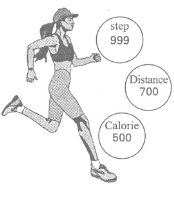题目内容
Anyone who has worn a cast (石膏) knows that rebuilding muscle strength once the cast is removed can be difficult. Now researchers at the Ohio Musculoskeletal and Neurological Institute (OMNI) at Ohio University have found that the mind is critical in maintaining muscle strength following a long period of not moving and that mental imagination may be key in reducing the associated muscle loss.
Strength is controlled by a number of factors---the most studied by far is skeletal muscle. However, the nervous system is also an important, though not fully understood, determining factor of strength and weakness.
Brian C. Clark and colleagues set out to test how the system functions in strength development. They designed an experiment to measure changes in wrist (腕) muscle strength in three groups of healthy adults. Twenty-nine subjects wore a hard cast that extended from just below the elbow (肘) past the fingers, effectively preventing the hand and wrist from moving, for four weeks. Fifteen subjects who did not wear casts served as the control group.
Of the 29 people wearing a hard cast, half were asked to regularly perform an exercise, imagining they were strongly contracting their wrist for five seconds and then resting for five seconds. This was repeated four times in a row followed by a one-minute break for a total of 13 rounds per session and five sessions per week. The other half performed no imagination exercises.
At the end of the four-week experiment, both groups who wore casts had lost strength in their unmoving limbs (肢体) when compared to the control group. But the group that performed imagination exercises lost 50% less strength than the non-imagination group. The nervous system’s ability to fully make the muscle recover also returned more quickly in the imagination group compared to the non-imagination group.
1.What does the underlined word “critical” mean in the first paragraph?
A. Serious. B. Embarrassing.
C. Important. D. Normal.
2.Which of the following statements is NOT true according to the passage?
A. Scientists have partly understood the nervous system.
B. Whoever has worn a cast for long may have difficulty in muscle recovery.
C. Scientists have already spent a lot of time in studying skeletal muscle.
D. The number of the subjects in the experiment was 29 in all.
3.What can we learn from the experiment?
A. The control group lost 50% less strength than the non-imagination group.
B. The imagination group lost more strength than the non-imagination group.
C. The control group wore casts but didn’t perform the imagination exercise.
D. The speed of non-imagination group’s muscle recovery was slower.
4. Where can you most probably find the passage?
A. In a science magazine. B. In a storybook.
C. In a textbook . D. In a book review.


